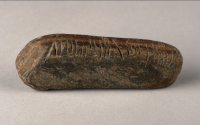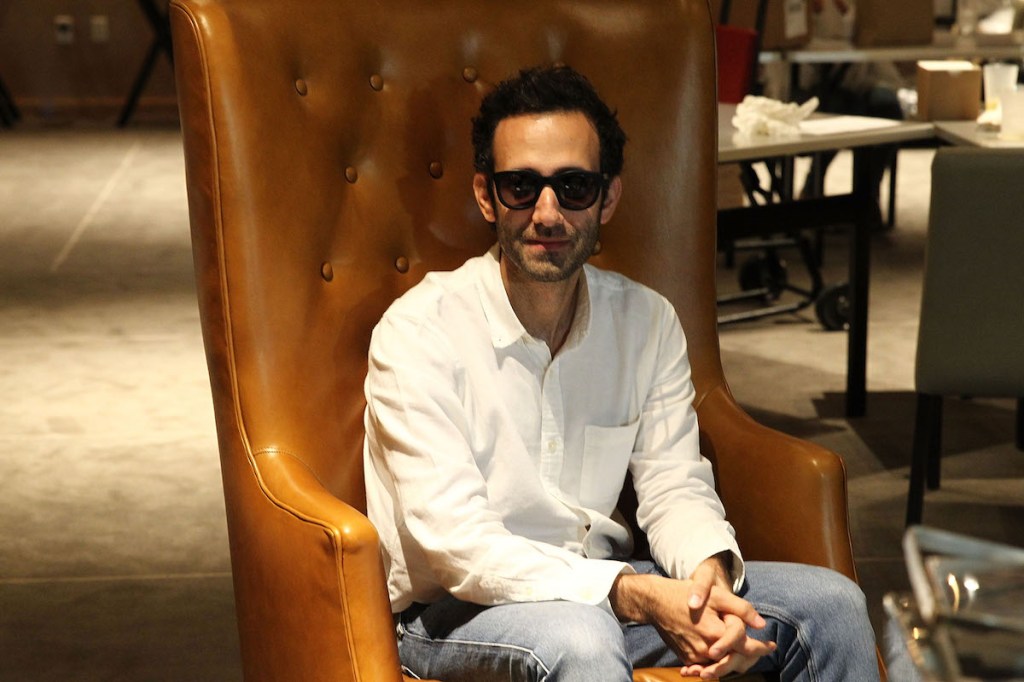LA-Based Artist Claims to Have Mounted Show for Cult Figure André Cadere. The Estate Disagreed.
The artist André Cadere has developed a cult following since his death at 44 in 1978, and so on the occasion that a show of his work has been held in the US, it has been greeted with intrigue and excitement from his fans. But when an exhibition claiming to be of Cadere’s art appeared in a Los Angeles garden this February, there was a wrinkle: Cadere’s estate said the show effectively didn’t exist.
The artist David Horvitz organized the show in a vacant lot in front of his studio, even going so far as to print mailers teasing nine Cadere works made between 1974 and 1977. It said that the show was done in participation with the Frieze Los Angeles art fair—which, by Horvitz’s own admission, was not entirely true, since Frieze hadn’t sanctioned it.
“You don’t do a Cadere show and ask for permission,” Horvitz wrote in an email.
The Cadere estate took to Instagram, where it published stories and a post decrying Horvitz’s show. Such statements aren’t typical from estates, which generally do not take pointed stances on shows devoted to their artists. But the situation was also unusual, since the estate said the works included were fakes.
“Any responsible and professional person should realize that all this is only a kind of trickery that has no interest and comes from an artist who thinks he can do anything to make himself a bit interesting,” the estate wrote.
Cadere is most fondly remembered for his présentations, in which he strolled around New York, Paris, and London while holding “barres de bois ronds,” or staffs composed of pieces of wood, painted unevenly according to strict systems of the artist’s own devising. Some appeared in an acclaimed show at New York’s Ortuzar Projects gallery in 2022 that can be credited with drumming up more recent interest in Cadere and his important contributions to Conceptual art.
Cadere would sometimes walk with his sculptures to museums or galleries that he had asked to buy his art, and “on more than one occasion, gallery staff or security ejected him and his barre,” according to an Art in America review of the Ortuzar exhibition by critic David Ebony, who mounted a Cadere exhibition in 1976. In addition to his présentations done in the public space, Cadere also exhibited with a number of galleries and museums during his lifetime and sold work regularly, according to his estate; his CV lists no fewer than 14 solo shows in 1975 alone.
Horvitz is most famous for “Mood Disorder,” a 2012 conceptual art project in which he took a photograph of himself with his head in his hands, uploaded it to Wikimedia Commons, and allowed it to circulate on the internet, where it subsequently ended up on stock photography websites. (“Mood Disorder” itself is now in the collection of the Museum of Modern Art.) He said that he was interested in a similar form of free-flowing artistic ideas with the Cadere show.
Responding to an emailed list of questions, Horvitz said he never asked the Cadere estate for permission, partly in tribute to the spirit of Cadere’s work. By way of example, he mentioned the time that Cadere sent the curator Harald Szeemann a series of postcards saying he was walking from Paris to Kassel, Germany, where Szemannn’s Documenta quinquennial was taking place, and then ended up revealing it as a ruse when he took a train there instead. Szemann subsequently rescinded Cadere’s invite to Documenta that year.
“So how do you do a real Cadere show?” Horvitz said. “You have to do it without permission from the estate. From the gallery. You have to go against those who try to ‘manage’ him. To manage his narrative. You have to go against his codification. Against the legislation of his legacy. You have to establish disorder.”
To do so, Horvitz made invitations that looked a lot like the ones for a Cadere show once staged at the storied Yvon Lambert gallery in Paris; Horvitz mailed them out on what would have been that dealer’s birthday. And technically, another show in the garden that featured works by living artists—Marianna Simnett, Jumana Manna, and Duane Linklater among them—was officially sanctioned and done in partnership with New York’s Swiss Institute. (A Swiss Institute spokesperson said the art space did not have anything to do with the Cadere show.)
Then there was the Cadere’s checklist itself, another complex matter with layers of meta. Horvitz sent over the list of the nine works with precise specifications for each, then said that they weren’t really pieces, since the true art, in Cadere’s practice, always existed beyond the sculptures themselves. He said he hadn’t sought permission from the estate for the show, and that the works in it weren’t for sale.
“I would actually argue that there was one work: which consisted of the nine bars, the announcement card, the site of the garden, the forced participation of Frieze,” Horvitz wrote.
Hervé Bize, a dealer who works with the Cadere estate, told ARTnews that the LA garden show was composed of fakes.
“It is sad to see that an artist needs this to make people talk about him or at least try to,” Bize wrote, adding, “If some people could have thought for a moment that it is possible to put together 9 bars of the artist in a garden for a couple of days, they are indeed very short-sighted.”
Bize directed viewers toward a just-opened Cadere show that he curated at the Fondation CAB in Brussels. That show features a survey of Cadere works, including 31 round bars, many of which are just being exhibited for the first time, according to Bize.
Correction, March 14, 2023: An earlier version of this article misstated that André Cadere had shown with Leo Castelli.



